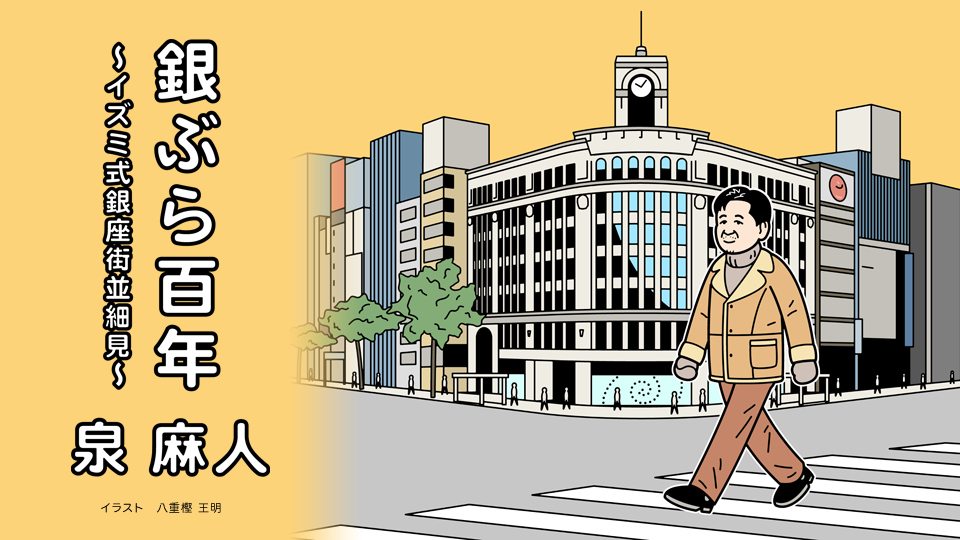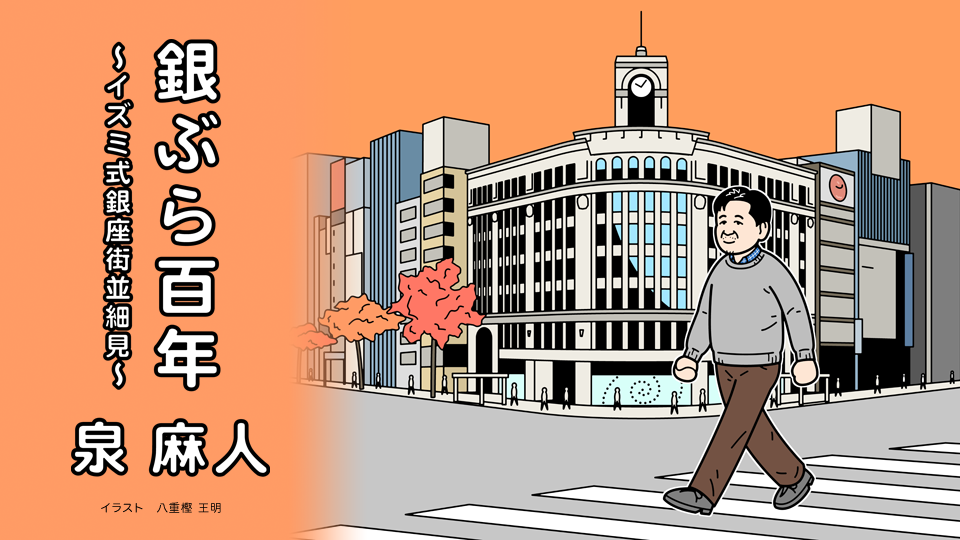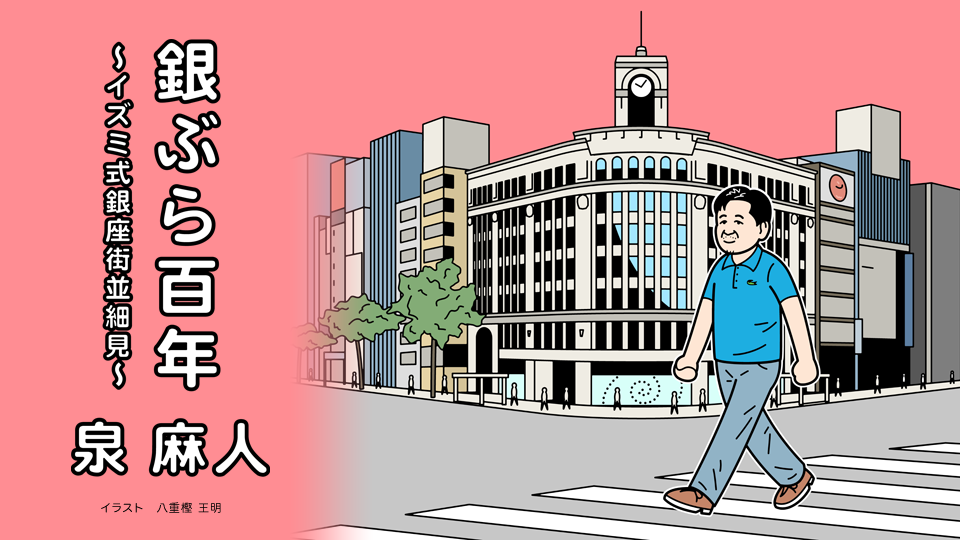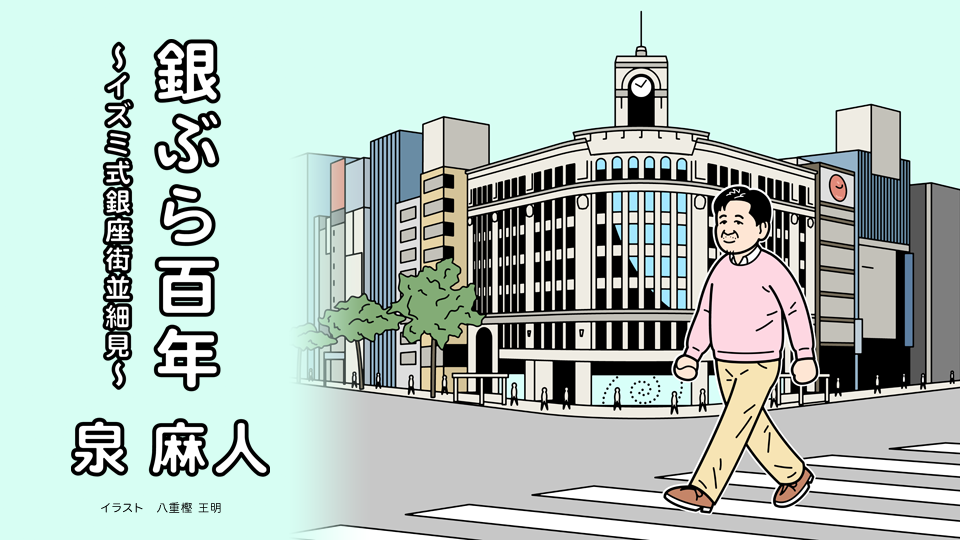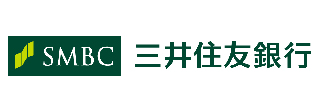
Ginbura Hyakunen
Ginza×Ginbura Hyakunen Vol.27
Typographer in Kobikicho
2020.12.25
Typographer in Kobikicho Walking down the street on the side of the Kabukiza Theater toward Kyobashi, just after passing by Magazine House, you can find old buildings here and there. Among the Italian and French restaurants that have increased in this neighborhood is a small printing shop w...

Ginza×Ginbura Hyakunen Vol.26
The King of Mingei on Nishiginza-dori
2020.09.25
Walking towards Shinbashi along Nishiginza (Sotobori)-dori, you can find an old Mingei store with a sign that says “TAKUMI” as you enter the 8-chome block. I had always vaguely imagined that it had originally opened for foreign tourists around the Tokyo Olympics, just like the International Arc...

Ginza×Ginbura Hyakunen Vol.25
To Hachimaki Okada with hopes for the restoration of Ginza
2020.06.25
I believe it was in the 1980s that I learned about “Hachimaki Okada.” I had left the company that I had worked five years for to become a freelance writer. I was fortunate to have a steady flow of work and had published two or three books. My first visit to the restaurant must have been with an ...

Ginza×Ginbura Hyakunen Vol.24
The man who built the San-Ai building
2020.03.25
The Ginza 4-chome intersection is home to many symbolic buildings, including Wako. The cylinder-shaped “San-Ai” building standing on the northeast corner is also an symbolic component of Ginza’s townscape. While its history is not as old as the second Wako (K. Hattori clock store) building bu...

Ginza×Ginbura Hyakunen Vol.22
The Centennial of the Ginza Street Association
2019.09.25
Every town in Japan has a local merchants’ association and Ginza, being no exception, is home to theGinza Street Association, established in 1919 (Taisho 8). If I were to refer to it as the first or pioneer of merchants’ associations, I would probably receive comments from other associations claim...

All List
- Ginza×Ginbura Hyakunen27 Typographer in Kobikicho
- Ginza×Ginbura Hyakunen26 The King of Mingei on Nishiginza-dori
- Ginza×Ginbura Hyakunen25 To Hachimaki Okada with hopes for the restoration of Ginza
- Ginza×Ginbura Hyakunen24 The man who built the San-Ai building
- Ginza×Ginbura Hyakunen22 The Centennial of the Ginza Street Association
- Ginza×Ginbura Hyakunen21 The continuing strong presence of Echigoya kimono store
- Ginza×Ginbura Hyakunen20 The people who created Ginza’s India, “Nair’s” in Higashi-Ginza
- Ginza×Ginbura Hyakunen19 A visit Kyobunkwan with a sacred feeling
- Ginza×Ginbura Hyakunen18 Nishi Ginza, a new stylish way
- Ginza×Ginbura Hyakunen17 Ginza Toraya’s Panama Hat
- Ginza×Ginbura Hyakunen16 TEIMEN and the Ginza Ivy Era
- Ginza×Ginbura Hyakunen15 Christmas with Peco-chan
- Ginza×Ginbura Hyakunen14 It’s summer! Beer! The LION!
- Ginza×Ginbura Hyakunen13 The Yoshida Croquette Soba Legend
- Ginza×Ginbura Hyakunen12 Sasaki Shoten, retailer of pipes and “Tsuya-fukin”
- Ginza×Ginbura Hyakunen11 Memories of Gekkoso and Dried Sardines
- Ginza×Ginbura Hyakunen10 A visit to Taimei Elementary School, king of elementary schools
- Ginza×Ginbura Hyakunen09 A Senbei Store in Ginza
- Ginza×Ginbura Hyakunen08 Advertisements of Ginza in 1911 (Meiji 44)
- Ginza×Ginbura Hyakunen07 The mysteries of a legendary panoramic building, TENKADO
- Ginza×Ginbura Hyakunen06 A History Lesson at SAEGUSA
- Ginza×Ginbura Hyakunen05 The secrent behind the deep-fried chicken served at Mikasa Kaikan
- Ginza×Ginbura Hyakunen04 Yamano Music in summer 1971
- Ginza×Ginbura Hyakunen03 The Ginza Apartments in Ginza 1-chome
- Ginza×Ginbura Hyakunen02 Memories of Olympic
- Ginza×Ginbura Hyakunen01 Visiting ITOYA at year’s end
